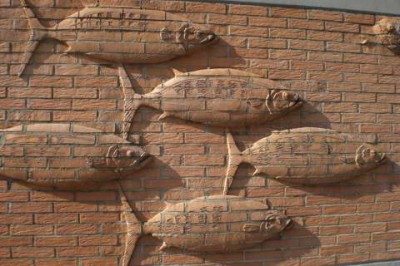
![]()
Urban planning is inherently spatial. It involves both location and time – as well as policy. Geo-technologies for planning-design, data creation, data management, analysis and visualisation are all used to support the dynamic, fluid and ever-changing nature of urban areas. And, they often tend to arise within integrated circumstances. These technologies and geodata allow urban planners and citizens to understand urban environments better, resulting in far superior decision-making.
![]()
Urban planning is inherently spatial. It involves both location and time – as well as policy. Geo-technologies for planning-design, data creation, data management, analysis and visualisation are all used to support the dynamic, fluid and ever-changing nature of urban areas. And, they often tend to arise within integrated circumstances. These technologies and geodata allow urban planners and citizens to understand urban environments better, resulting in far superior decision-making.
 The link between geospatial technologies and spatial data for design is not lost upon urban planners. Urban planning relies heavily upon short, medium and long-range planning and the tools and data used to achieve success in these endeavors often involves tighter linkages between data currency, resolution and completeness.
The link between geospatial technologies and spatial data for design is not lost upon urban planners. Urban planning relies heavily upon short, medium and long-range planning and the tools and data used to achieve success in these endeavors often involves tighter linkages between data currency, resolution and completeness.
‘Enriched’ urban planning is directly related to the extents of available data under these terms. Think of the tools and geodata as existing within a toolbox, one that urban planners can dip into, to construct planning scenarios, modeling, analytic understanding and visual ‘what-if’ possibilities. Alternatively, ‘Starved’ urban planning includes a toolbox without many data sources, it’s contents have aged and the extents for which the information can be used, are reduced – urban planners are hungering for options.
Is Strategic Planning the True Goal?
Yes and no. A strategic urban plan by definition will invariably become more fixed, more well-defined and supported through legislation and definitive action. However, strategy can be formed using either an ‘Enriched’ or ‘Starved’ approach.
But if we turn our attention toward developing a successful outcome, then an enriched approach is preferred because the ability to create quality outcomes and decision-making is enhanced. Improved data resources and tools support better results.
Short, Medium & Long Term Planning
If all of the spatial data and tools within an urban organisation were to be integrated, and made available to all participants, then we can logically guess that improved performance would result. Some tools, and geodata in particular, might be categorised to short, medium and longer term goals. One-off data gathering and yearly licensing may fulfill the spatial urban planning needs for short term project-by-project goals. But longer term projects and organisation wide efforts may demand continuous data collection, continuous monitoring and additive measures for adding to existing data stores.
In other words, it helps to think of urban plans and planning in terms of scale, length and size. Starting small, working on a few projects and succeeding at them can have major benefits in terms of gaining experience, knowledge and an understanding of possibilities for the future – as compared to failing at one single effort.
It is often important to ensure staff and other participants are properly trained and gaining appropriate experience as projects with tools and spatial data move along. This is expedited with smaller steps, building over time and integrating at deeper levels as projects expand and diversify. Don’t let technology and spatial data be wasted and stranded apart from goals, opportunities and strategies.
Kinds of Tools & Spatial Data
Some might argue that urban planning projects need to remain in-house for privacy, operating or other reasons. However, spatial tools including GIS, CAD, surveying technologies and remote sensing systems today, are weighted toward architectures that include higher levels of automation, sharing, collaboration and interoperability. One does not need to know all things. There are benefits to approaches that off-load some tasks, pull others closer and out source parts of work flows.
As we begin to talk about the linkage of design to spatial tools and spatial data, there are gains that can be realised as collaboration contributions more thoughts, ideas and allow for testing of whims and wishes against reality and efficiency. Many technologies today support these dimensions, helping to close the design-create-analyze link.
Geo-technologies and spatial data link with urban planning on several fronts today. Data is moving between people, while higher levels of interoperability are contributing toward sharing and re-use.
It is important to think about ‘Enriched’ or ‘Starved’ urban planning. Invariably, it means that we are talking about better or worse outcomes and the abilities of people working on them.